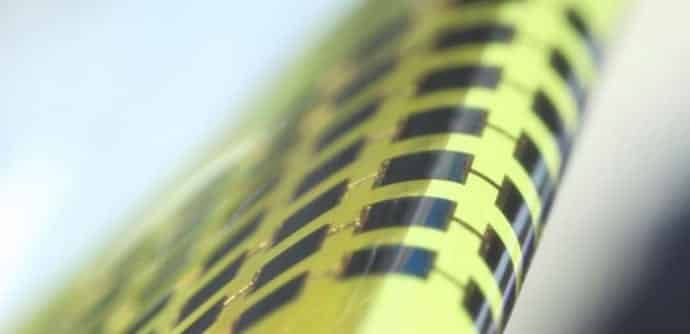Scientists develop solar cells 100 times thinner than a human hair that could revolutionise wearables tech
The prime issue with further development in smartwatch and health bands is the low power output. This is due to the small size of wearable tech which lives little room for big batters like smartphones. It is perhaps this reason that wearables like smartwatch have not taken the way they should. However, now scientists seem to have found the answer for battery in wearables that could revolutionise the tech. Scientists have developed ultra thin and flexible solar cells which could increase the power output for smartwatches and health bands.
Scientists at South Korea’s Gwangju Institute of Science and Technology have developed new solar cells thinner than human hair and flexible enough to wrap around a pencil. These solar cells could power wearable electronics like fitness trackers and smart glasses. According to the scientists, the new solar cells are 1000 times smaller than human hair and could solve the huge space problem in smartwatches.
At just a micrometre wide, the photovoltaic cells are thinner than a single human hair or a coat of paint, which both measure up at around 100 micrometres. On the other hand, standard photovoltaic cells are usually hundred times thicker and even the slimmest solar cells currently available are still two to four times thicker than their newly-invented counterpart.
Professor Jongho Lee, an engineer at the Gwangju Institute, said his team’s panels were “less fragile under bending, but perform similarly or even slightly better” than panels with a width of 3.5 micrometres.
When the scientists tested the effectiveness of the tiny panels, it was found that they are capable of converting sunlight to electricity at a rate comparable to thicker photovoltaics. Thin materials are more flexible than the thick ones because the stress in a bent material increases farther out from the central plane. However, since the thick sheets have more material farther out, they tend to be more difficult to bend.
The researchers made the ultra-thin solar cells from the semiconductor gallium arsenide. By applying pressure at a temperature of 170 degrees Celsius, they were able to bond the cells directly into a flexible substrate without using a bulky adhesive.
The so-called cold-welding process created a temporary adhesive that could later be peeled away leaving direct metal to metal bond.
The study that was published in Applied Physics Letters on June 20, the researchers reported that “The transfer-printing process reported here, providing a yield close to 100%, makes direct electrical interconnection possible with metal electrodes on substrates.”
“This method does not require thick contact layers for the bottom electrodes, thus enabling efficient photon recycling in a thinner structure with back reflectors.”
Despite the thinness of the cells, they were found to be less fragile and perform comparable to or even better than thicker cells, the researchers said. Likewise, bending tests disclosed that the cells are able to bend around radius as small as 1.4 millimetres.
According to Professor Lee’s team, their method of transfer printing could enable highly flexible photovoltaic cells to be made with a lesser amount of materials. They also said that the thin cells can be integrated onto frames of glasses or fabric, which could power the next wave of wearable electronics.
The technology is being tested out by the scientists and it could be a while before they release it for commercialisation. Until then you have to make do with your 5 hour powered smartwatch or health band.

